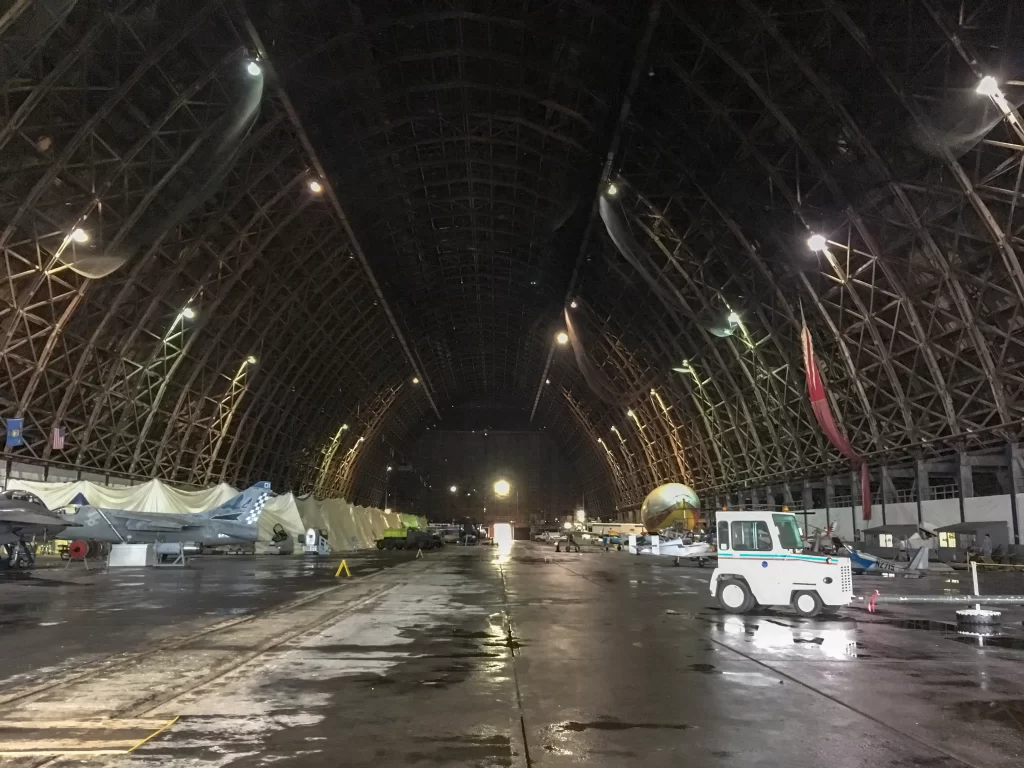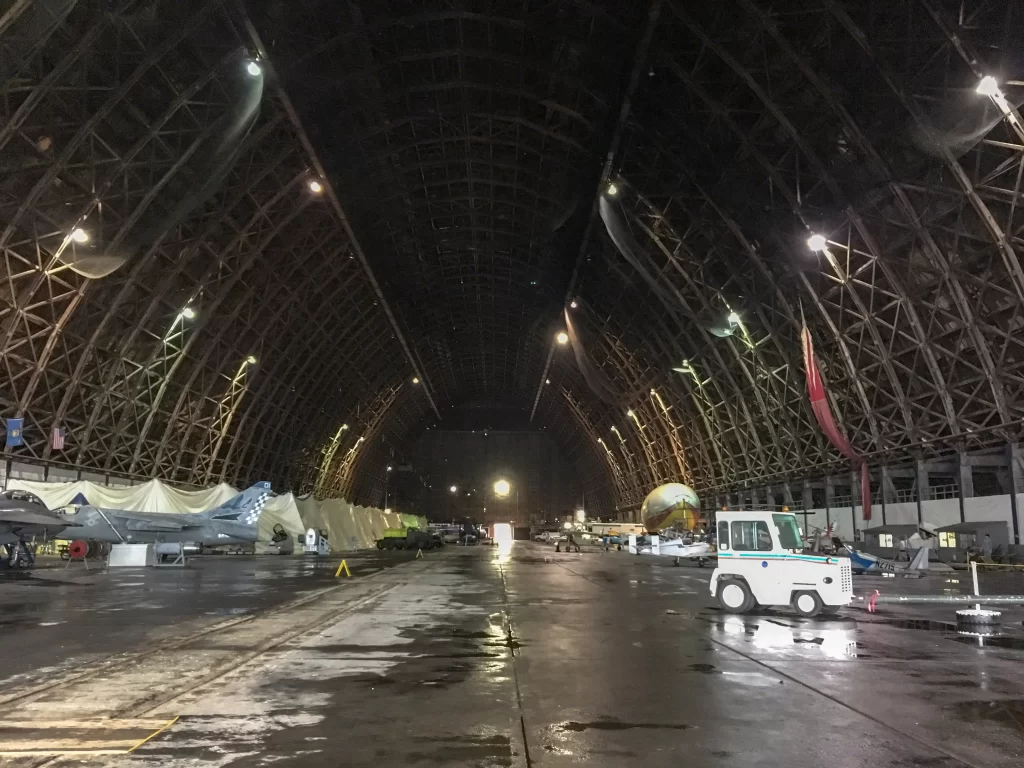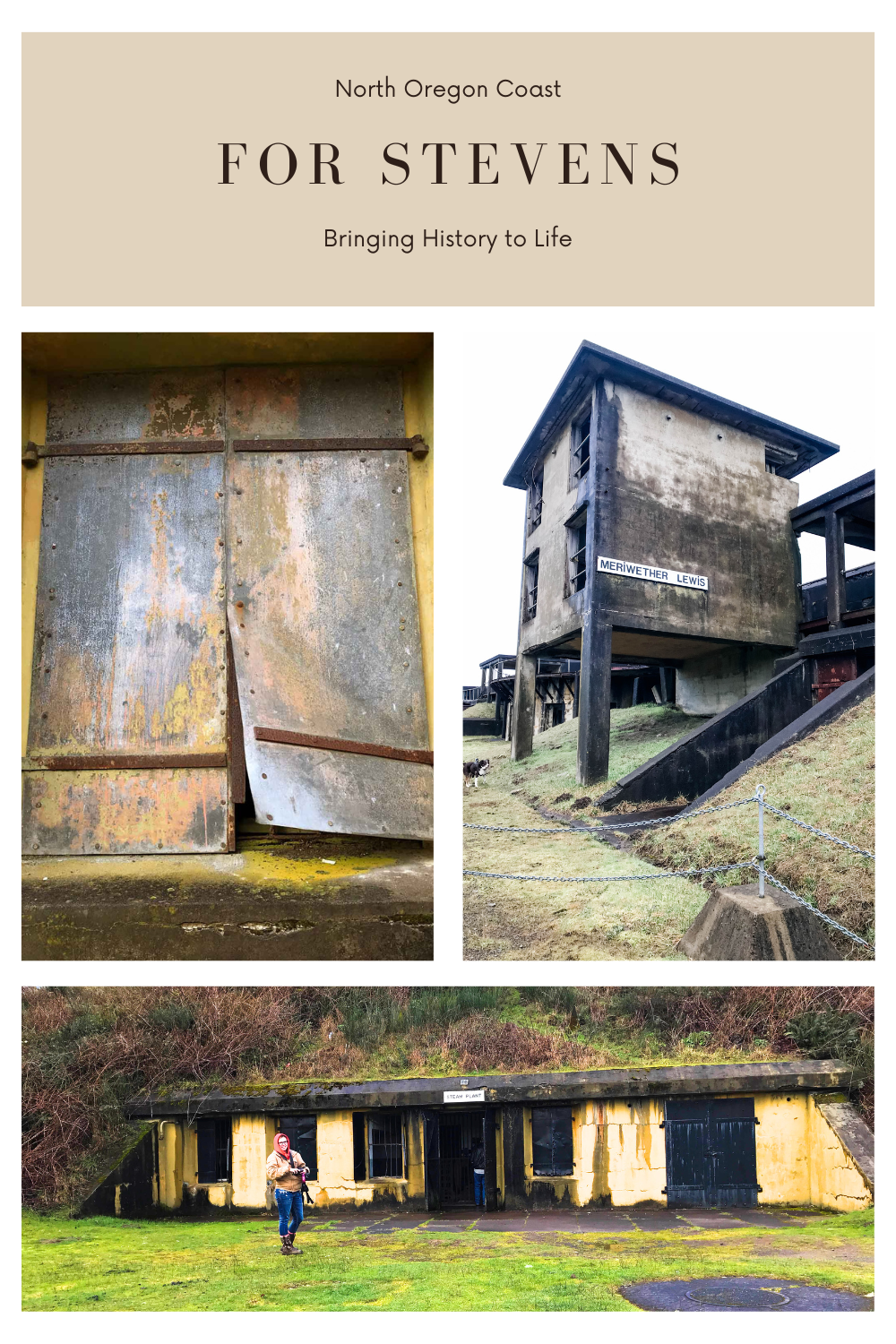DISCLAIMER: Our posts may contain affiliate links. If you click through and make a purchase, you won’t pay a penny more, but we’ll get a small commission, which helps to keep the lights on. Thanks!
Tillamook Air Museum houses the almost forgotten secret of Oregon’s crucial contribution to World War II. If you have ever driven down highway 101 near Tillamook, odds are, you have seen this massive building, with “Air Museum” in large letters on it.
While many drive by and wonder, few stop in to see the wonder of this Oregon scenic place. Inside the all wooden building is a collection dedicated to the little known history of blimps in World War II.
Table of Contents
Tillamook Air Museum History: Where Giant Buildings Support a Giant Cause

As you drive down highway 101, a strange but looming building appears in the distance. Painted on the roof in large, blocky lettering is “Air Museum.” It catches your eye for a few seconds as you fly down the road, but many don’t give it much more than a passing glance.
So, just what is the deal with this substantial building and why do so many pass it by? To understand, we have to take a deeper look into our history.
Why Blimps?
With World War II well under way, the United States was looking for the best anti-submarine patrol to protect its vulnerable coastlines. For this unique task, K-class Airships were chosen to be the right choice for the job.
K- class Airships, are in one word: blimps. These blimps were filled with 425,000 cu. ft. of Helium that allowed them to float, and patrol for days. This was a large advantage over traditional aircraft, which could only be airborne for hours before needing to be refueled. In fact, each blimp had a range of 2,000 miles.
The K-class Airships were each 252 feet long, 80 feet in diameter, and obviously took up a lot of space. To accommodate the blimps, 17 hangers were constructed along the country’s coastlines, with 2 of them calling Tillamook, Oregon home.
The Hangars of Tillamook Air Museum
Tillamook Air Museum is home to one of the only remaining K-class Airship hangars left in the world.
Naval Air Station Tillamook had 2 blimp hangars in operation during World War II: Hangar A and Hangar B. Due to metal conversation during the wartime, the hangars were constructed entirely of wood. That is nearly 300 feet of width, entirely clear span, of just wood, quite an engineering feat!
The construction of the hangars was no small task. Hangar B was completed in August of 1943, with Hangar A reaching completion shortly after, being built in a record breaking 27 short days, and seeing no deaths or serious injuries during its construction.
Each hangar measured 1,000 feet in length, 300 feet in width, and covered a surface area of just over 7 acres.

In Tillamook eight K-class airships (blimps) worked out of the air station, run and operated by the ZP-33 Squadron. Each airship was run by a crew of 8-10 men while on patrol of the coastline looking for enemy submarines.
After the Japanese surrender in 1945, the blimps were no longer necessary, and the Air base and staff was reduced. Just three short years later, the Tillamook Air Station was decommissioned.
Hangar A and Hangar B at Tillamook Air Museum: Modern History

From 1949 to 1984 three Lumber companies used the hangars for operations and storage. For a short time between 1984 and 1992, Hangar A was used to build small aircraft. By 1992, Hangar A was used for storage, mostly for bales of straw.
In August of that year, the straw ignited, and Hangar A went up in flames. It was the largest fire ever seen in Tillamook County. Firefighters fought to save the historic building, but their efforts were futile. They soon focused their energy on keeping the fire from spreading to Hangar B, to preserve its history.
Today, Hangar B still stands proud and in great shape as the Tillamook Air Museum. Today, the only thing that remains of Hangar A is four pillars.
Visiting Tillamook Air Museum

Tillamook Air Museum offers different exhibits as well as an up-close view of the historic hangar. When you first enter you will see the gift shop and a small food court, but the really cool stuff is through the next set of doors.
Inside, you will find a large collection of historic wartime aircraft. With most of the aircraft, you can get up close and see all the details. Unfortunately, a few of the planes are sectioned off for their protection. Included in this exhibit are a few antique military vehicles as well.
While exploring the Hangar, make sure to look at all the architectural design and detail of the building. It is truly amazing just how large and intricate the building construction is. The doors to the hangars are occasionally open in good weather, which will give you a perspective on just how big the blimps were.
Around the hangar, you will find doors that open into other exhibits, so be sure to explore the Tillamook Air Museum thoroughly. These include: a theater room featuring a movie about the Hangars history, the helium room, and Tillamook and WW2 historical artifacts.
Outside of the Hangar, there is a “mini guppy” aircraft that you explore the interior of. Just go through the small set of doors on the northern side of the hangar.
The Tillamook Air Museum has many temporary exhibits that are forever changing. So be sure to check back often.

The A-4B Skyhawk at Tillamook Air Museum
Up until very recently, the A-4B Skyhawk sat atop the entrance to the Tillamook Air Museum to welcome guests. This plane has an interesting story, and has become a beloved character of the museum.
This Skyhawk became a member of the U.S. Navy in October of 1958, where it served in California, and Hawaii. After a mid-air collision, the plane was retired and sent to New York to be displayed at the U.S.S. Intrepid Museum.
In late 1997, the Skyhawk was loaned out to the Tillamook Air Museum, where it was set atop the entrance to the museum to welcome guests. While locals loved the “plane on a stick” and visitors loved to see it upon entering, the navy did not.
The United States Navy felt the Tillamook Air Museum was not maintaining the aircraft correctly, and that it should be removed if it proper maintenance was not being done. So, conversations began of how to care for and repair the Skyhawk.
In 2022, the Skyhawk was removed from the entrance to the Tillamook Air Museum, and placed inside the museum. A piece of artwork depicting a blimp took its place at the entrance instead.
By today, (early 2024,) the restoration of the Skyhawk has been completed, and it is on display inside of the Tillamook Air Museum, where it is protected from the elements, and can be more thoroughly enjoyed by visitors.
Tillamook Air Museum: Frequently Asked Questions
How Long Does it Take to Tour Tillamook Air Museum?
Tillamook Air Museum is a self guided adventure, meaning you can take as much time as you need. We would recommend spending at least an hour here, but plan for 2-3 hours if you would like to thoroughly explore and read each exhibit in their entirety.
Are Pets Allowed at Tillamook Air Museum?
Pets are not allowed inside of the museum, only service animals. There is a large dog walk section outside of the museum where leashed pets are allowed.
How Should I Dress for the Tillamook Air Museum?
Because of the nature of the hangar, it is very cold inside, particularly during winter. The hangar is not heated, so dress warmly!
What is the “Museum Hard Stop Policy?”
The Hard Stop Policy at Tillamook Air Museum means that no guests are allowed to enter the museum after 30 minutes prior to closing time. This allows the staff to get home at a timely manner, while allowing guests time to enjoy the entirety of the museum without being asked to leave.
Will My RV Fit in the Tillamook Air Museum Parking Lot?
Yes, it will. The museum has ample parking for large vehicles and trailers. If you are looking for overnight parking, the Port of Tillamook Bay RV park is next door and offers overnight parking.
What to Know Before You Go
- Open 10am-4pm
- Closed Mondays
- Admissions prices
- Adults: $13
- Seniors: $11
- Military: $9
- Kids: $8
- Children under 6: $4
- Group tours available by reservation
- Free parking
- Museum located 2 miles off I-5
- Gift shop
- Located close to Tillamook Cheese Factory











